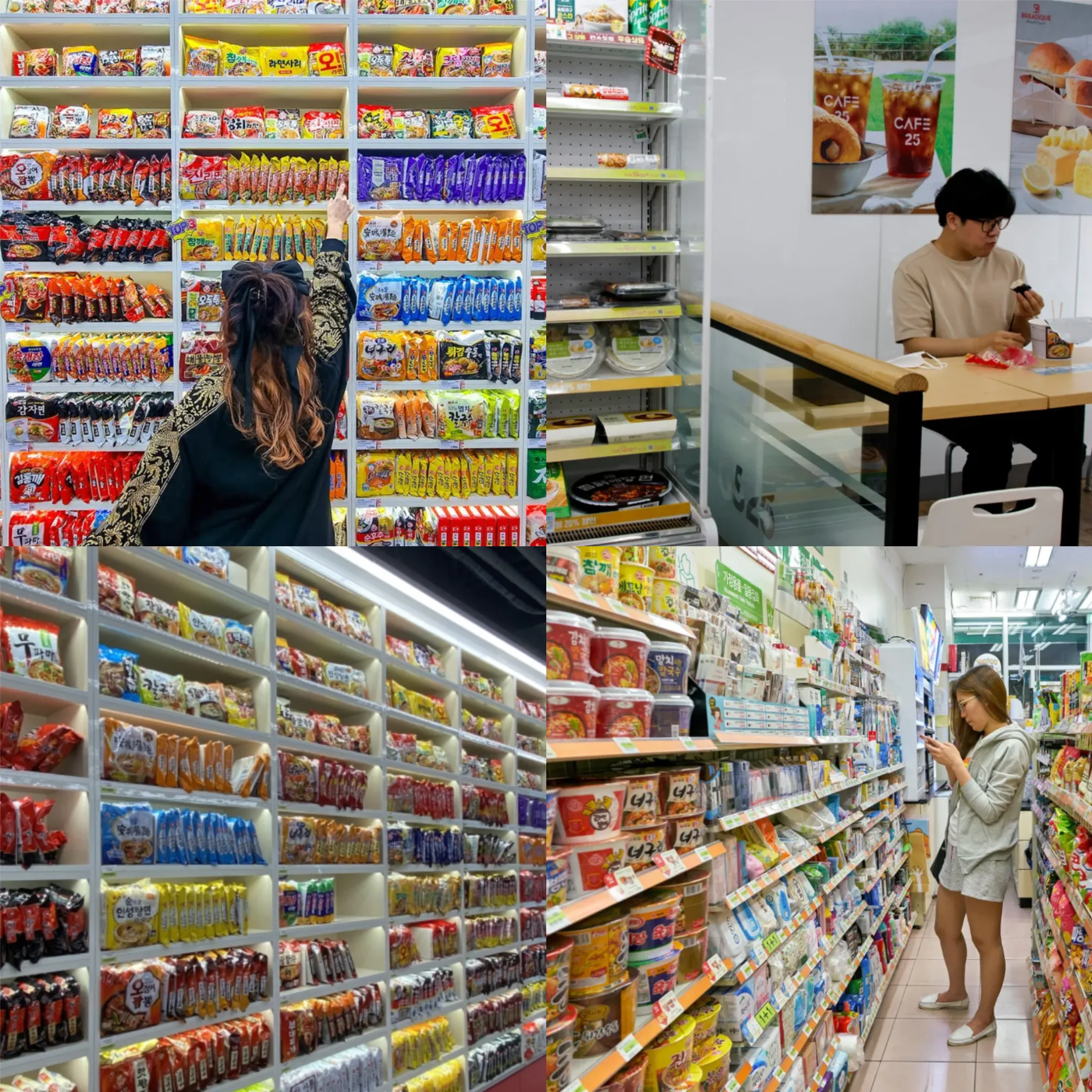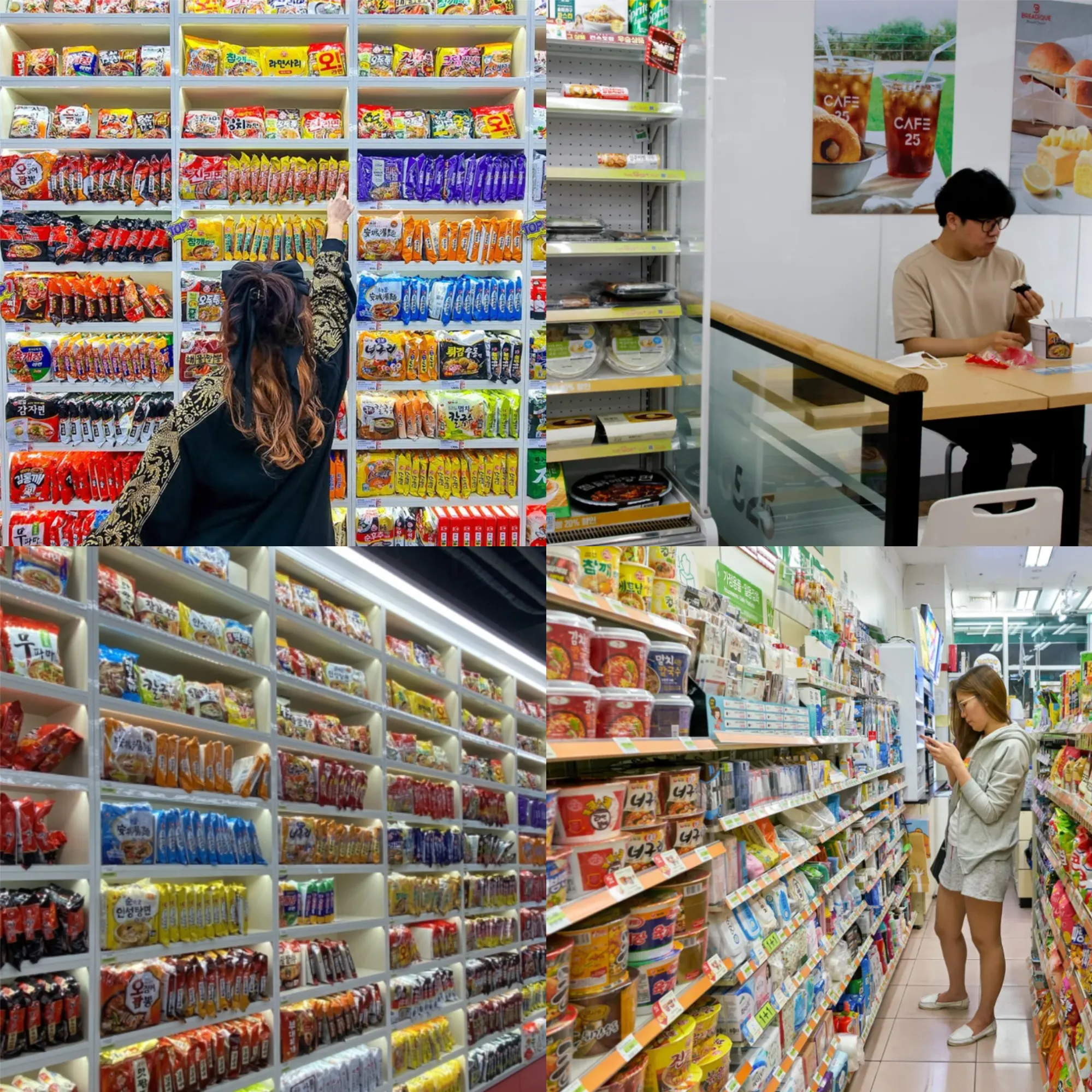
Inside South Korea’s Convenience Stores: A Global Success Story Fueled by Instant Ramen and Influencers

Imagine running multiple errands—picking up a package, topping up your metro card, grabbing lunch, and withdrawing cash—all in one trip. In South Korea, this isn’t just possible; it’s a way of life, thanks to the nation’s thriving convenience store industry.
South Korea is the undisputed leader in convenience stores, with more than 55,200 outlets serving a population of 52 million by the end of last year. This translates to one store for every 950 people, making it the highest density of convenience stores per capita globally, even surpassing Japan and Taiwan.
These stores are more than just places to grab a quick snack. They offer an array of services that cater to the fast-paced lifestyle of South Koreans. At any given convenience store, you can pay bills, withdraw cash, charge your phone, make online orders, and even send international mail. In certain locations, you can also exchange foreign currency, charge electric scooters, or pick up groceries. This seamless integration of services has made these stores an indispensable part of daily life, particularly in urban areas like Seoul, where stores are on nearly every corner.
Food is another major draw. South Korean convenience stores boast a wide selection of ready-to-eat meals, from instant ramen and miso soup to snacks like kimbap and onigiri. The availability of microwaves, hot water dispensers, and seating areas transforms these stores into popular lunch spots for office workers, late-night hangouts for partygoers, and quick pit stops for students.
The rapid urbanization of South Korea has only fueled this trend. With over 80% of the population living in urban centers, many residents find convenience stores more accessible and budget-friendly, especially single-person households who might not need to cook or buy in bulk.

The COVID-19 pandemic further accelerated the convenience store boom, as people preferred quick, local shopping over crowded supermarkets. The result? A massive surge in revenue. Between 2010 and 2021, the industry’s revenue jumped from $5.8 billion to $24.7 billion, surpassing traditional supermarkets and department stores.
But it’s not just South Koreans who are captivated by these stores. The global phenomenon known as the “Korean wave” has extended to convenience stores, thanks in part to social media influencers. Platforms like YouTube, TikTok, and Instagram are flooded with videos showcasing South Korean convenience stores, from in-store ramen stations to snack reviews. These videos have captivated millions worldwide, especially in Western countries where convenience stores offer a more limited selection.
Content creators like Jiny Maeng have capitalized on this trend. Her videos on South Korean convenience stores have garnered millions of views, appealing to both Korean and international audiences. The novelty of buying, cooking, and eating instant ramen in a store is “mind-blowing” for many viewers, especially those accustomed to more basic, Western-style stores.
The popularity of these stores has even led to their expansion overseas. Major brands like CU, GS25, and Emart24 are now opening outlets in Southeast Asia, leveraging the global appeal of Korean culture.
While the online hype around South Korean convenience stores may be waning, their influence remains strong. As they continue to innovate and expand, these stores are set to remain a cornerstone of South Korean culture and a symbol of its global influence.






